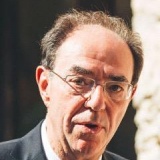
 Renato Cantore
Renato Cantore
IT and US: A well-deserved recognition for a great Italian American
- WTI Magazine #143 Sep 18, 2021
-

 Renato Cantore
Renato Cantore
The control center of the Kennedy Space Center at Cape Canaveral, the most important and prestigious rocket base in the world, will be named after Rocco Petrone, the engineer of Italian origin who was the launch director of the Apollo 11 mission and then became the head of the entire program for the exploration of the Moon.
This was announced by the new director of the center, Janet Petro, a few weeks at the top of the space base, explaining that this decision does justice to a personality who played a decisive role in the great adventure of the conquest of space, but for over fifty years had remained a bit in the shadows, perhaps because of his shy and reserved character.
As his very Italian name tells us, Petrone's origins are in that deep and mysterious south that contributed so much to the great epic of emigration between the end of the nineteenth century and the first decades of the twentieth century. His parents, Antonio Petrone and Teresa de Luca, left just one hundred years ago, in 1921, from Sasso di Castalda, a small town in the mountains of Basilicata. In America they found work in Amsterdam, an industrial town two hours away from New York. Here, in 1926, little Rocco was born. He was the third child, and, according to tradition, was named after the patron saint of the town of origin. But his was not a happy childhood.
He was only six months old when Antonio, his father, was killed by a train manoeuvring a few metres from home. The little one was expected by a life of sacrifices to which he did not escape, supported by his mother, a woman of extraordinary energy. Imposing in his physique and lively in his intelligence, as soon as he was a young boy he began to pay for his studies by working, he made a name for himself in high school and was admitted to the military academy at West Point. Here he was appreciated as a defensive tackle in the football team that won the national championship for two years, as well as for his success in studies that led the U.S. Army to make him specialize in mechanical engineering at the prestigious Massachusetts Institute of Technology. Already as a young officer, he was considered one of the greatest experts of missiles and launch pads, to the point that Wernher Von Braun wanted him with him at NASA when it was necessary to launch the challenge to the Soviet Union for the conquest of space and President Kennedy indicated the objective of the landing of the first men on the Moon by the end of the sixties.
He was sent to Cape Canaveral to work on the design of the Saturn V, the largest rocket ever built with its one hundred and ten meters in height and three thousand tons of weight, and soon became the director of all launch operations. This role meant being the person responsible for every phase of the process, from the construction of the spacecraft to the construction of the ramps, until the departure of the ship. He led an army of almost twenty thousand people, and for everyone was "the tiger", a leader who always demanded maximum efficiency and effective response to every problem. Proverbial are his legendary outbursts, his maniacal controls, the check lists that included thousands of operations, and the walks in the control room forty minutes before the launch to look into the eyes, one by one, the hundreds of technicians at work in the various stations.
And on that July 16, 1969, at 9:32 a.m., when Armstrong, Aldrin and Collins left for the great adventure, at the center of the firing room at Cape Kennedy, it was him directing all operations, the forty-three year old son of Italian immigrants who had become NASA's top manager.
His decisive role in the great adventure of space has finally begun to be discussed on the occasion of the fiftieth anniversary of Apollo 11. His old collaborators, or better said, the few survivors of that generation of thirty-forty years old who made history, such as Edgar Manton, who later became a professor at the University of Texas, Isom Riggel, the chief engineer of the launch operations, and John Tribes, one of his most trusted men, have promoted the request to remember Petrone, who died at the age of eighty in 2006, with an initiative of great symbolic meaning. The request was supported by the association of former NASA employees, and made its own by the American Space Agency, with the decision made known on August 4.
That control center that he had designed and built in detail with a team of five hundred engineers, now becomes the "Rocco Petrone Launch Control Center" at Cape Canaveral.